|
Getting your Trinity Audio player ready...
|
Have you ever wondered how some businesses manage to sell their products or services with just a few words? It’s all about the power of copywriting. Whether it’s a website, social media post, or advertisement, the right words can make all the difference in driving sales.
Copywriting is an essential skill for any business owner or marketer. It’s not just about writing a few sentences – it’s about creating persuasive and compelling content that resonates with your target audience. However, not everyone is a natural-born writer, and crafting effective copy can be daunting.
In this ultimate guide to copywriting, we’ll walk you through the basics of writing content that sells. Whether you’re a beginner or a seasoned pro, this guide will help you take your copywriting skills to the next level. So, let’s dive in and discover the art of writing copy that sells!
Copywriting
Copywriting is a technique consisting of the creation of commercial texts (copy) in order to persuade potential clients to act.
What is copywriting?
Copywriting is a form of writing that aims to persuade a user to take a specific action, such as signing up for a newsletter or purchasing a product. It requires creativity and problem-solving to effectively communicate a brand’s features, benefits, and value to potential customers.
Copywriting aims to drive sales and conversions while creating meaningful experiences for the target audience. It involves crafting messages that resonate with consumers, using language that is clear, concise, and engaging.
To be effective, copywriting must be precise and to-the-point, conveying the most important information in a way that is easily understood. This involves a deep understanding of the target audience, their needs, wants, and pain points.
Copywriting can be applied across a variety of marketing channels, from website copy to email marketing to social media posts. When done well, it can be a powerful tool for driving traffic, building brand awareness, and ultimately, increasing sales and revenue.
How Does Copywriting Differ from Content Marketing?
Copywriting and content marketing are two important strategies used by businesses to create a compelling online presence. Both involve the creation of written content, but they serve different purposes.
Copywriting is focused on persuading the reader to take a specific action. Whether it’s clicking a button, subscribing to a service, or purchasing a product, copywriting aims to drive conversions. It’s often used in advertisements, product descriptions, landing pages, and calls-to-action. Effective copywriting is essential to driving revenue and building a strong brand image.
On the other hand, content marketing is focused on creating valuable and informative content to engage and retain a target audience. This content can take the form of blog posts, white papers, e-books, podcasts, and videos. The goal of content marketing is to build a relationship with the audience by providing information and insights that they find useful or entertaining.
By doing so, businesses can build brand awareness, establish thought leadership, and increase customer loyalty.
One of the main differences between copywriting and content marketing is their objectives. While copywriting aims to drive conversions, content marketing aims to provide value to the audience. Copywriting is generally more direct and action-oriented, while content marketing is more educational and informative.
Another difference is the context in which they’re used. Copywriting is often used in paid advertising, where businesses are paying to have their message seen by a specific audience. Content marketing, on the other hand, is generally used in organic channels such as social media, email, and search engine optimization. These channels focus on providing valuable content that people will seek out and engage with.
While copywriting and content marketing share some similarities in terms of creating written content, they serve different purposes and are used in different contexts. Copywriting aims to persuade the audience to take a specific action, while content marketing aims to build relationships and provide value to the audience. Both strategies are essential components of a successful online presence, and businesses should use them together to achieve their marketing goals.
Why Is Copywriting Important?
Copywriting is essential for effective communication with potential customers and driving sales. Quality copy can make or break a business, as it has a significant impact on the way a brand is perceived by consumers.
In today’s fast-paced digital age, people have limited attention spans, and it is crucial to capture their attention in just a few seconds. Great copywriting can help achieve this by informing, inspiring, and persuading people to take action.
Copywriting also plays a crucial role in developing a brand voice and identity. It can help establish a brand’s personality, values, and tone of voice. A well-defined brand voice can create a strong emotional connection with customers and differentiate a brand from its competitors.
Furthermore, copywriting is critical for increasing sales. Effective copy can persuade potential customers to take action, whether it’s making a purchase, signing up for a newsletter, or downloading a resource.
On the other hand, poorly written copy can turn customers away, resulting in lost sales and missed opportunities.
Types of Copywriting
There are several types of copywriting, each with a unique purpose. Understanding these different forms of copy is essential when learning how to write effective copy. Here are some of the most common types:
Brand Copywriting
Brand copywriting is an essential aspect of marketing that involves crafting messaging and content that resonates with your target audience and develops your brand voice.
According to a survey, 70% of respondents agreed that brands should share positive stories and boost positivity. Brand copywriting aims to find out what your audience wants and present the right information in the right voice.
While some may think of commercials, billboards, and jingles for big brands like Pepsi, Burger King, or Netflix when they hear the term “marketing,” brand copywriting goes beyond the typical features of advertising. Instead, it focuses on creating strong emotional responses by crafting memorable experiences that resonate with consumers.
This type of creative copywriting is less about proving that a brand is better than its competition and more about connecting with the audience on a deeper level.
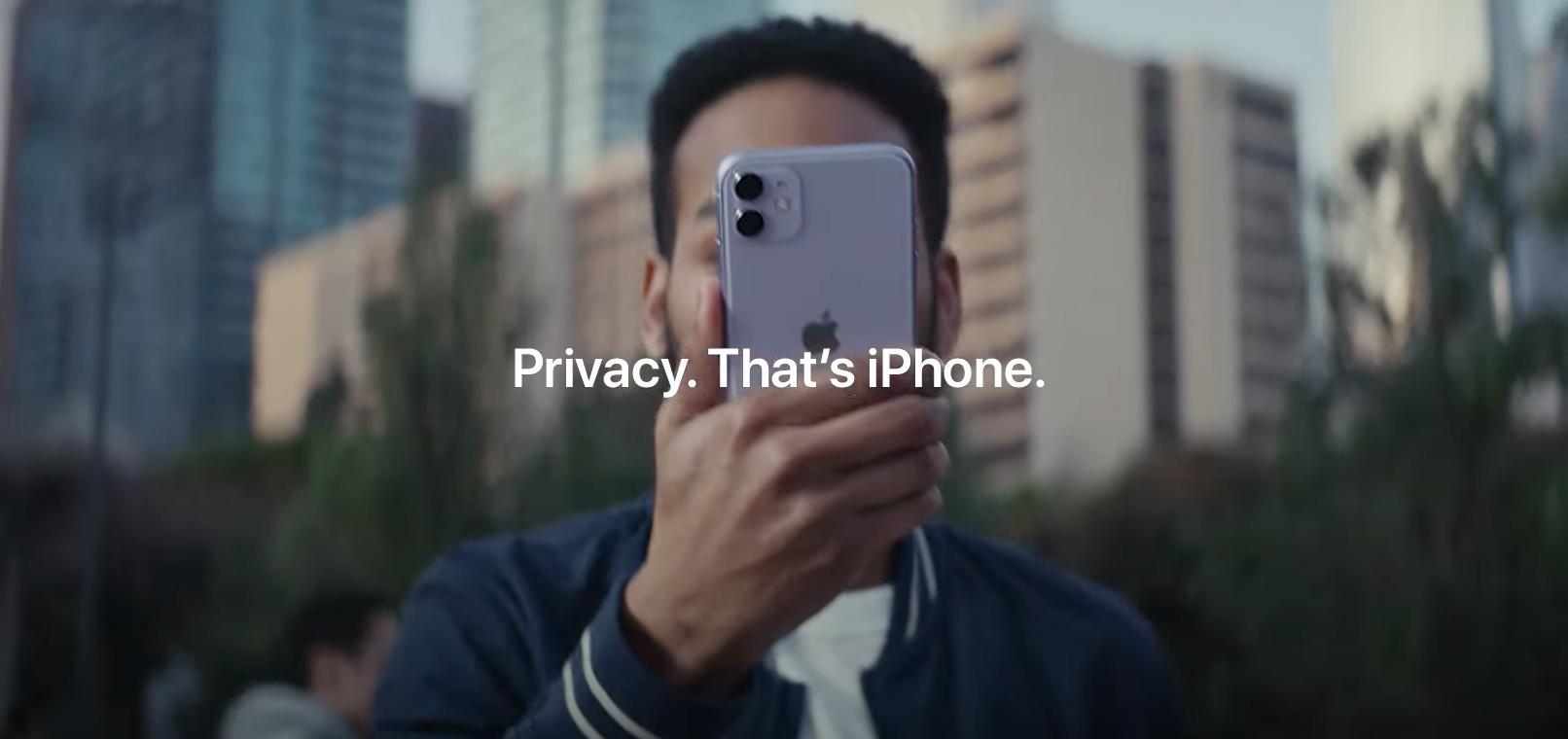
Social Media Copywriting
Social media has become an integral part of any brand’s marketing strategy, and social media copywriting plays a crucial role in engaging audiences through posts and ads.
However, the challenge with this style of copywriting is adapting brand messaging into various unique formats for different platforms such as Facebook, TikTok, or Instagram.
Despite the format differences, social media copywriting is still action-focused. 50% of people on Instagram have visited a website to buy a product just from seeing it in Stories.
However, this won’t happen unless you can persuade people to take action with this medium. To achieve that, social media copywriting requires a certain set of guidelines.
This is how you do social media copywriting:
- Use powerful verbs and active language to engage your audience.
- Be brief. Social media’s purpose.
- Write in a friendly, conversational tone. Use short sentences, don’t be too formal.
- Make your headlines eye-catching
- Add hashtags
- Mix it up. Avoid just selling to people. Connect with your followers through engagement, entertainment, education, and interaction to foster strong relationships.
- Reveal details on upcoming product releases. Be aware that not everyone likes this type of content.
- Finish with a strong CTA so your customer knows what you want them to do next.
- Be helpful and sound human, not like a robot.
For example, Trello’s Twitter account is packed full of product demos, GIFs, quizzes, and helpful content, making it seem more personable and not just a brand.
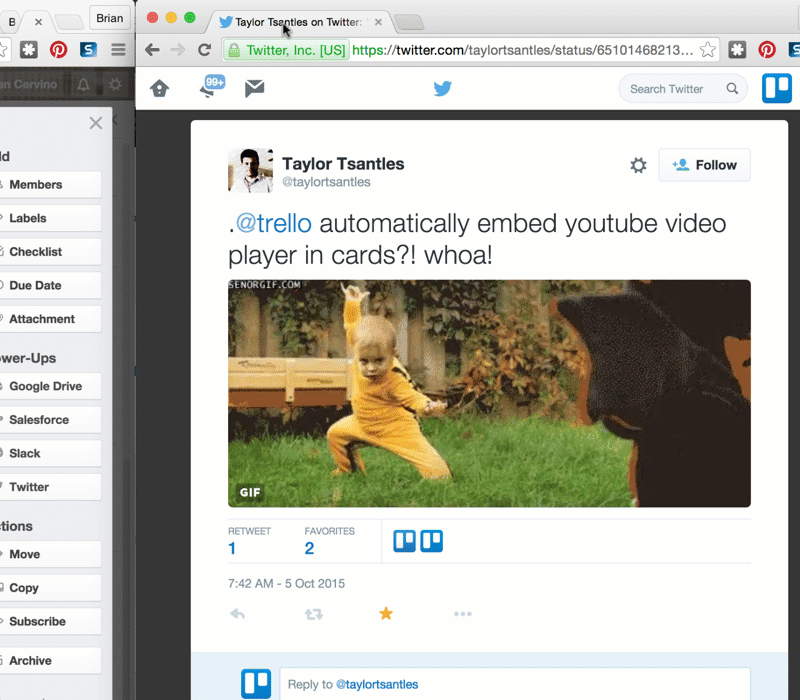
SEO Copywriting
SEO (Search Engine Optimization) is an essential practice that businesses use to get their content to rank highly on search engine result pages (SERPs) and attract targeted traffic.
Recent research shows that 69% of marketers invested in SEO in 2021, growing from 64% the previous year. However, getting content to rank well on search engines is an art that involves delivering genuine value to users while integrating a healthy number of keywords and phrases.
One of the most critical aspects of SEO copywriting is using keywords throughout the article while avoiding keyword stuffing. It’s also important to make sure the article is well-written and informative, as the better the content, the more likely people are to share it. Adding images and videos whenever possible can also make content more engaging and help with SEO. Including links to other related articles on the site can improve the site’s ranking and increase traffic.
In addition to delivering value to users, SEO copywriting requires optimizing content for both readability and search engines. Writing catchy headlines that grab attention and using strong call-to-actions are other important practices. It’s important to note that search engine algorithms constantly evolve, so staying up-to-date with the latest SEO trends and best practices is crucial for success.
Overall, SEO copywriting is an effective way to attract targeted traffic to a business’s website and improve its search engine ranking.
Insight Copywriting
Insight copywriting focuses on establishing a brand as an industry authority by creating high-value educational content. This type of copywriting is particularly valuable for brands with an experienced audience, as they are seeking simple, detailed solutions to their key pain points.
Thought leadership is a key aspect of insight copywriting, and it involves producing content that showcases a brand’s expertise in its industry.

According to a survey, 54% of decision-makers spend at least one hour a week reading thought leadership content, making it an effective way to reach individuals who are likely to take action. Thought leadership content can be presented in various formats, such as stories, expert interviews, blogs, or a magazine.
An excellent example of insight copywriting is Nutanix, a cloud computing company that uses its online magazine ‘The Forecast’ to provide a broader look at cloud applications and their benefits. ‘The Forecast’ also features expert content, videos, and podcast links, which further cements Nutanix’s expertise in the field.
Email Copywriting
Crafting a compelling email is a unique challenge, given its presentation. But if done right, it can have a big impact. Email marketing offers an average ROI of $36 per $1 spent.
To achieve success with email copywriting, it’s important to follow these tips:
- Write engaging email headlines that grab readers’ attention and make them want to read more.
- Keep the body of the email clear and concise, while still offering value to the reader. The content should be relevant to the reader and provide solutions to their needs or problems.
- Create strong calls-to-action (CTAs) that prompt readers to take action, such as clicking a link or making a purchase. The CTA should be clear and prominently placed.
- Ask for a small commitment that won’t alienate your audience. This could be signing up for a newsletter, downloading an ebook, or participating in a survey.
Balancing these goals can be challenging, but mastering the art of email copywriting can help you craft the perfect message that resonates with your audience and drives results.
Tools for Copywriters
Copywriting is an essential element of modern marketing, and the right tools can make a significant difference in its effectiveness. While writing is traditionally thought of as a uniquely human skill, modern technology can help copywriters improve their craft. While AI may not be able to completely replace human copywriters, it can be an excellent tool to make copywriting more efficient and effective.
According to recent research, 43% of marketers believe that more than half of all their marketing tasks will be automated in the next five years, including elements of copywriting. So, how can you get started using AI to boost your campaigns?
Below are some of the tools that you can consider to make you’re copywriting more efficient, optimize your results, and hit the ground running. These include tools for keyword research, content optimization, grammar and spelling checks, and automated copywriting.
By using these tools, copywriters can save time and effort while also improving their copy’s overall quality. This means that they can focus on creating more engaging and impactful copy that resonates with their target audience.
So, if you’re a copywriter looking to up your game, it’s worth exploring these tools and finding the ones that work best for you:
1. Anyword
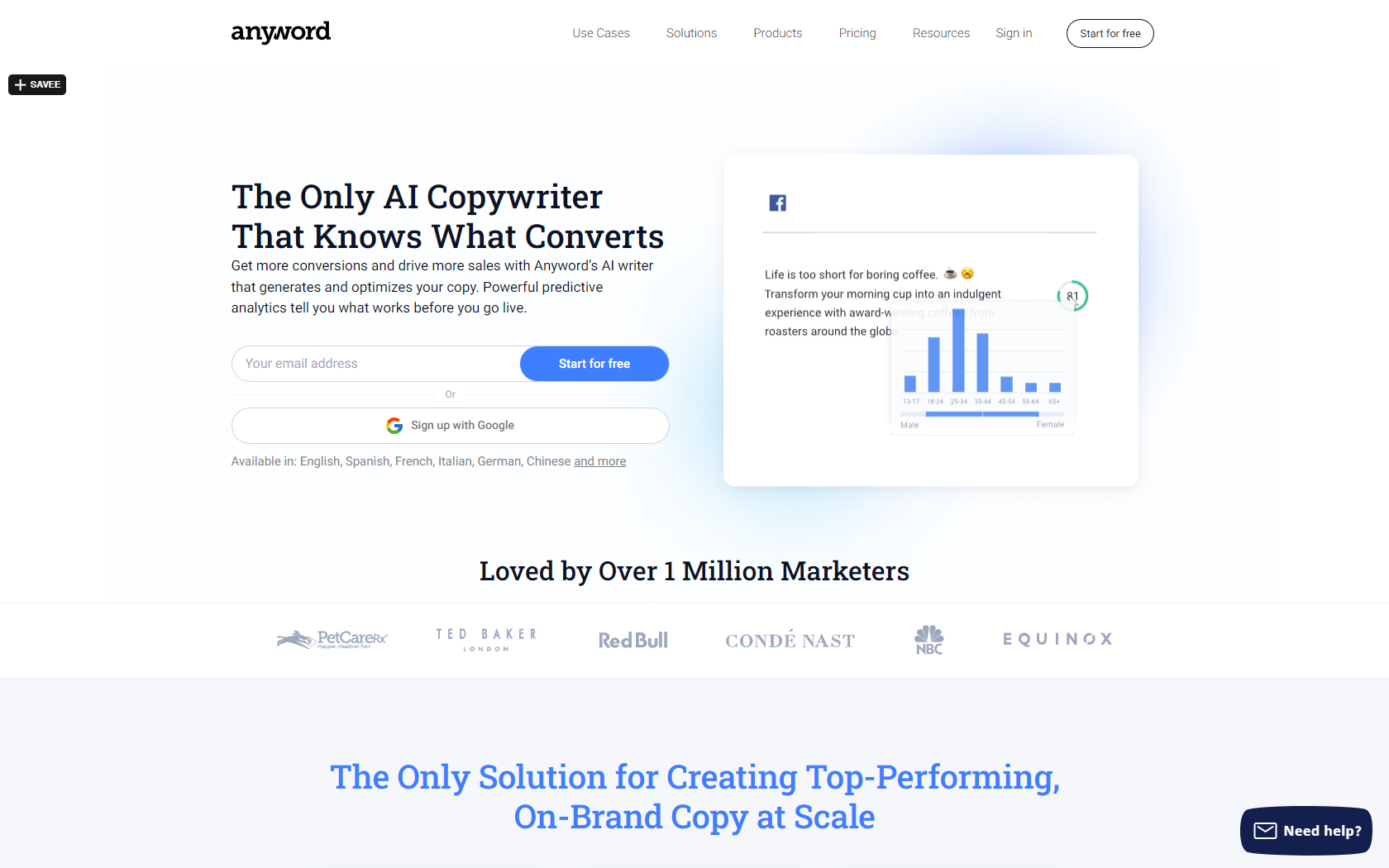
Copywriting can be a guessing game, but AI-powered tools can provide data-backed insights to optimize your marketing efforts. Leveraging data to craft and promote smarter copy is increasingly common among copywriters, with platforms like Anyword leading the way.
Anyword uses predictive analytics to create and optimize marketing copy for various channels. It analyzes billions of data points to provide insights that help you pick the right words for the right audience with minimal guesswork.
The insights provided by the analytics have been found to increase conversions by up to 30%, with Ted Baker seeing a whopping 946% ROAS.
Incorporating data into content decisions can be challenging, but Anyword’s AI-based language models make it a natural part of the writing process. You receive instant insights as you craft your copy, which is incredibly valuable compared to spending time pulling data from multiple sources.
Some key benefits of Anyword include a predictive performance score, custom keywords, content identification, and optimized content for any copy type.
2. Grammarly

Grammarly is a writing tool used by 30 million people worldwide that helps prevent simple spelling and grammar mistakes that could ruin great copy. With its free online writing tool, it analyzes your text as you write, pointing out errors in spelling and grammar.
Additionally, it has a useful feature that tells you what your tone sounds like, allowing you to tweak your message to appeal to specific audiences. Although you still need to read through your copy yourself, Grammarly can be an effective way to screen for many writing mistakes.
Grammarly’s high-level spelling and grammar recommendations make writing a breeze, and its free version is powerful enough for most people. You can also get immediate summaries of the tone your copy uses and access style guides to improve your writing.
What’s more, extensions are available for all the software you use to write, including Chrome, Google Docs, social media, Outlook, and more.
3. Wordtune
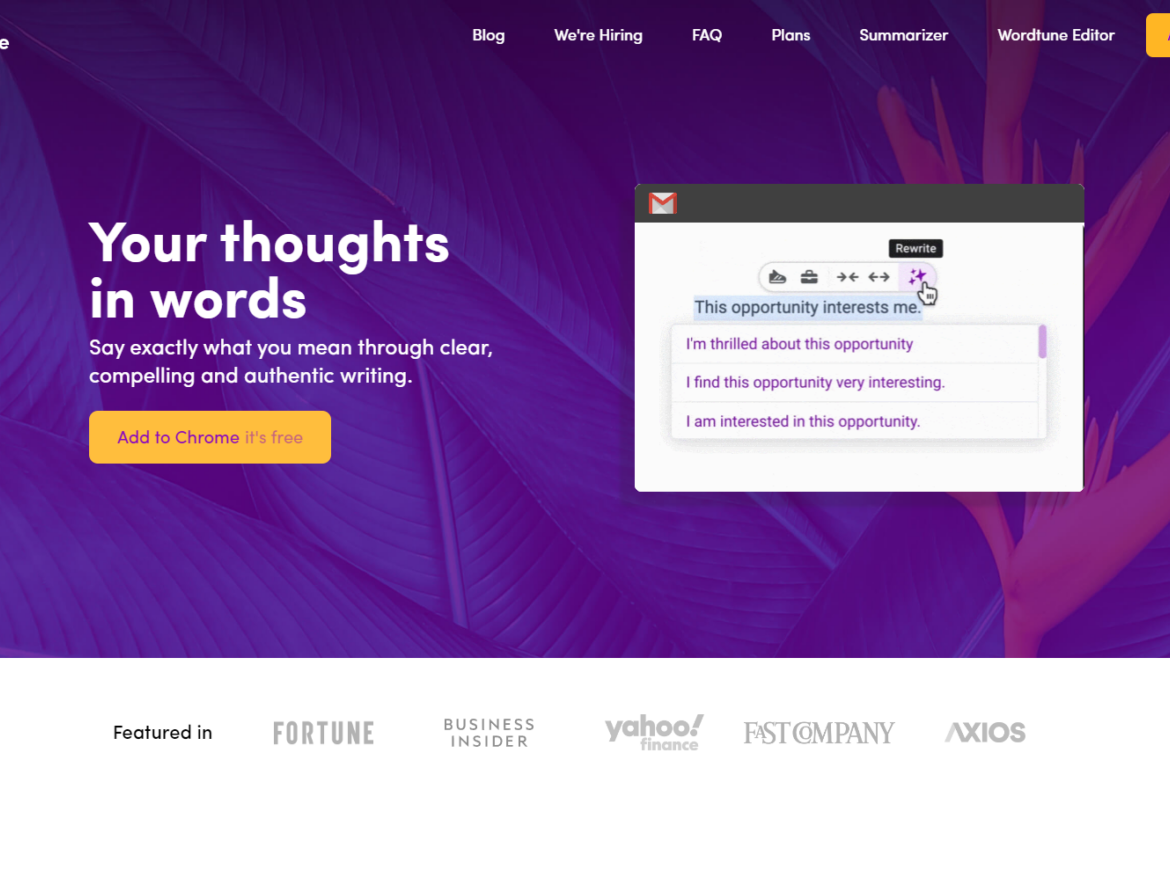
Refining your copy can be a time-consuming process, but what if you could type the first thing that comes to your head and get instant suggestions on how to improve it? That’s where Wordtune comes in.
With Wordtune, you can type up to 280 characters, and the software will show you recommended rewrites to inspire your creativity. The premium version even allows you to adjust the tone, shorten or lengthen your copy, and more.
Wordtune doesn’t generate ideas for you, but it can make them better. This tool is perfect for those who want to write quickly and efficiently, without sacrificing quality.
Some of the key benefits of Wordtune include instant rewrite suggestions, the ability to shorten or expand your copy with the click of a button, and the option to switch between formal and casual tones. Plus, Wordtune offers plug-ins for all the software you use to write, such as Chrome, Google Docs, social media, Outlook, and more.
Whether you’re a seasoned copywriter or just starting, Wordtune can help you refine your writing and achieve better results.
How to Copywrite: Copywriting Strategies
In addition to understanding what copywriting is and the tools available to improve your copy, it’s important to also consider the strategies that can make your copy stand out. While technology can certainly help, there’s no substitute for human creativity and ingenuity when it comes to crafting truly compelling copy.
So, what are some strategies you can use to take your copywriting to the next level? Here are a few tips:
1. Know Your Audience
Writing effective copy starts with knowing your audience. While privacy concerns are a hot topic, a survey found that 65% of consumers are willing to share their data to get a personalized experience. This means that understanding your target audience is crucial to creating copy that resonates with them.
To better understand your audience, it’s important to create a buyer persona.
A buyer persona is a fictional representation of your ideal customer that includes demographics, job titles, locations, age, and income level. To create a buyer persona, analyze your current customer data and look for patterns among customers with high lifetime value or retention rates.
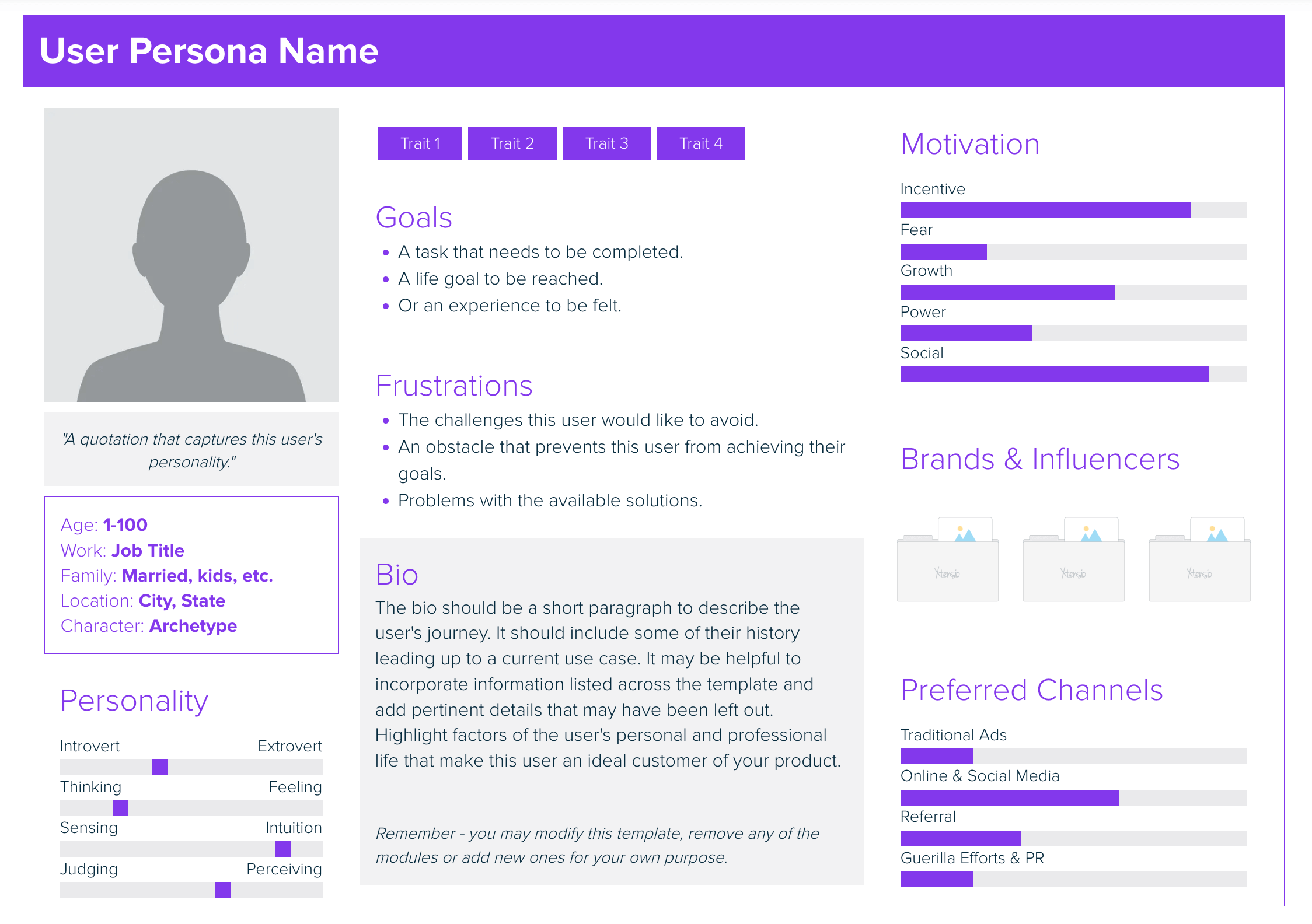
Once you have a buyer persona, ask yourself questions about your target audience.
- Who are you currently selling to?
- Who would you like to sell to?
- What do your current customers love about your offering?
- What struggles do your customers face, and how do you help them solve those problems?
Use this information to guide your copywriting process. Your copy should appeal directly to your target audience using language that resonates with them. Use “you” and “we” to involve your audience in the process.
For example, consider the difference between these two sentences:
- AI tools can help increase conversion rates.
- AI tools can help you increase your conversion rates for your copy.
The second sentence is more personal and appealing to the reader.
To help you create a customer persona, a free template is available. By taking the time to understand your target audience, you can create copy that inspires them to take action.
2. Use the Right Tone
Writing effectively involves more than just selecting the right words. Your tone, or attitude, offers context beyond your choice of words. It conveys whether you are light-hearted, serious, eccentric, or highly professional, giving potential clients a glimpse of your personality.
For example, consider two copywriting samples for a hypothetical company that sells sales software. The first sample reads, “Understand your customers better using state-of-the-art software designed to take your business from zero to hero.” It is professional and highlights the major benefits of the software. Furthermore, it uses a slightly quirky tone by using the phrase “zero to hero,” indicating that the company doesn’t take itself too seriously.
In contrast, the second sample reads, “Gain a deeper understanding of your customers using our AI-powered sales software. SellingPlus software helps streamline your sales funnel and drive revenue.” While this sample also includes similar information to the first, the tone is more professional and goes into greater detail. It explains how the software uses AI to improve the sales process, making it better suited for C-suite executives or enterprise companies.
Although the information in both samples is the same, the tone is adjusted to suit different audiences, helping clients feel more at ease with the product or service.
Tone can also make a significant impact, as shown in the following example:
“The sun is shining, and the birds are chirping. It’s a perfect day for a picnic in the park.”
The words themselves are not remarkable, but the tone makes the copy unique and draws readers in.
Here’s another example of the effect tone can have:
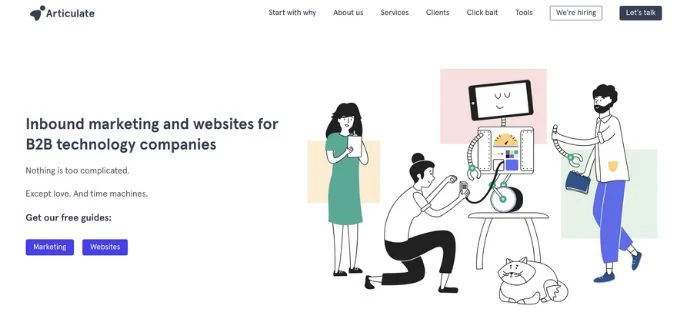
The tone is the secret sauce that adds flavour to the copy and makes your ears perk up with excitement! The words may seem ordinary, but their arrangement is like a magnet, pulling you in with irresistible force.
If you’re struggling to get the right tone in your writing, Grammarly has a built-in tool to help. For instance, if you choose a flavour for a “general” audience, the tool will identify complex sentences that might be difficult for a general audience to comprehend.
3. Stress Your UVP (Unique Value Proposition)
When it comes to writing copy, it’s essential to stress your UVP (Unique Value Proposition). In today’s world of globalization and online sales, there are more options than ever. This means that your copy needs to focus on what sets you apart from your competitors.

Slack is an excellent example of a company that highlights its software’s value proposition. By using just four words, they explain how their platform replaces email in your company and can simplify everyday team communication and collaboration.
It’s important to remember that your business isn’t perfect for everyone. You should be laser-focused on explaining why you’re the right fit for your specific audience. Whether you’re helping small businesses handle their social media marketing or providing software for free-range chicken farmers to track egg production, your UVP should be tailored to your ideal customer.
To develop your UVP, take time to settle on what sets you apart. Instead of trying to be good at everything, focus on your unique strengths. Then, incorporate that into your copywriting.
There are many free templates available online to help you get started with developing your UVP. By stressing your unique value proposition, you’ll be able to set yourself apart from your competitors and appeal to your ideal customer.
4. Use Storytelling
Authenticity is essential to consumers, as highlighted by an Authenticity Gap Study across 300 brands and five categories. Transparency and real-world data and examples are essential to back up your stories.
Throughout history, storytelling has been used to achieve various goals, including building a seven-figure business, for example. Storytelling is more entertaining, easier to remember than facts, helps put things into context, and we are more likely to pass the story on. A good story is also timeless.
Breaking things up with little stories makes serious topics more engaging, as seen in this article. Instead of using an example of a faceless business, we chose one that helps farmers track their chickens’ egg production. This example created a picture in the reader’s mind, highlighting the importance of showing the software’s value proposition and how it generates sales.
In virtually any form of copywriting, the basics of storytelling can be used. Using real-life stories that encourage action is even better.
For example, Going (formerly Scott’s Cheap Flights) uses storytelling to showcase its rebranding:
In the video about their rebranding, Example highlights the power of storytelling in creating a connection with their audience. They use personal stories to showcase the company’s journey and values, which helps to create an emotional bond with viewers.
The use of storytelling is also seen in the visuals of the video, which include animated characters that represent their customers and their experiences. The overall effect is to make their brand more relatable and engaging to their target audience.
5. Use Copywriting That Solves Pain Points
To write effective copywriting, it is important to identify the customers’ pain points and focus on solving them. Rather than focusing on the positives of a product or service, customers are looking for solutions to their problems.
The main focus of the copy should be on these pain points. It is possible to identify pain points for a broader audience by using good copywriting.
One example of focusing on a customer’s pain point is the copy on the landing page for the keyword research tool Ubersuggest, which focuses on the problem of wanting more traffic.
Customers face six main pain points:
- financial
- risk and trust
- ease and convenience
- productivity and time
- processes and journey
- communication and support
To find out about customers’ pain points, businesses can create a survey and craft their copy around the results. Identifying pain points is an effective way to create copy that speaks directly to customers’ needs and can help to increase conversions.
6. Leverage Social Proof
Social proof is a crucial element in copywriting that can make it more powerful by increasing trust. With 77% of people always reading reviews before choosing a business, using social proof can help build trust in potential customers. When people see others have had a good experience with a product or service, they are more likely to want to enjoy the same benefits.
Using social proof to inspire copywriting is an effective way to determine what customers love about a product.
Reviews and customer surveys can help businesses understand pain points to focus on and what benefits to highlight. Adding social proof near copy can also help strengthen it. Reviews and case studies can be added to landing pages, homepages, and websites to show that other people like what is being offered.
To illustrate, ExpressVPN uses simple yet highly effective copywriting that includes social proof. By focusing on what the customer wants and addressing their pain points, they use social proof to show that they can help customers solve their problems.
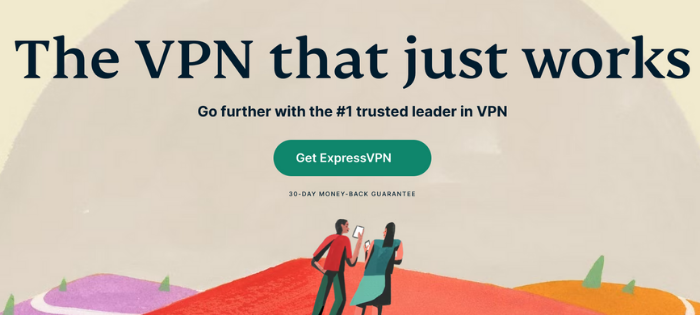
By scrolling down the webpage, customers can also see that they are highly recommended by reputable sources, which adds to the trustworthiness of the copy.

7. Use Crisp Language
The use of crisp language is crucial in copywriting. It’s essential to avoid fluff, unnecessary words, and long-winded prose. The average human attention span might not be as short as eight seconds, but we don’t have much tolerance for timewasting when browsing the internet. We want quick access to important information and insights.
In copywriting, every single word must serve a purpose. If it doesn’t educate, stress a benefit, or build a connection, it needs to go. There are several common words and phrases to ditch, such as :
- that
- to
- maybe
- very
- a little
- even
- just
- perhaps
- so
- really
- of
- like
It’s necessary to use these words occasionally to make the copy easy to read. However, it’s important to ask yourself whether they bring anything to the table.
You can use tools like the Hemingway App to look for overly complex sentences and phrases. Then, substitute these filler phrases with powerful words that drive the action rather than taking up space.
8. Test Your Copywriting
To improve your copywriting, it’s important to test your work to find out what resonates with your target audience. Despite this, many people don’t run tests as much as they should. Copywriting is a process, and part of the process is determining what works and what doesn’t. No matter how much research you do or how many times you poll your audience, A/B testing your copy is essential.
A/B testing can yield impressive results. For example, in 2010, Barack Obama used A/B testing to raise an additional $60 million for his fundraising campaign. While that might have been a new concept back then, A/B testing is still underutilized today.
The truth is, even the most seasoned copywriters are often surprised by what works and what doesn’t. Sometimes, different leads have varying problems, and other times the tone needs some work. Additionally, tastes and preferences change over time. For example, years ago, telling customers that you use AI might not have meant anything, but today, every brand is using it in their copy. Those who were A/B testing their copy would have discovered this winning strategy earlier.
When A/B testing your copy, it’s important to make minor changes rather than drastically different versions. Test one or two elements at most and see which version drives the most conversions. Once you’ve determined the most successful version, test it again and again.
Consider testing these elements:
- Point of view: “You can save” versus “Save now,” for example.
- Button copy: “Buy Now,” “Get your free account,” or “Sign up.”
- Headlines: Focus on different features or pain points.
- Formatting: Bullet points versus numbered lists, for example.
- CTAs: What drives consumers to take action? Test multiple CTAs to see what works best.
- Several tools make A/B testing your copy easy, including Google Optimize.
Remember that A/B testing should be an ongoing process that helps you improve your copy over time. Don’t run one or two tests and call it good. Keep testing and refining your copywriting to ensure you are meeting the needs of your target audience.
9. Use Engaging Facts and Stats
Facts and statistics are powerful tools in copywriting. They can quickly grab the reader’s attention and add credibility to your message. In this article, I have used multiple statistics to support my arguments.
Without data to back up your claims, it’s hard to convince readers to take action. For example, if you tell them that A/B testing is crucial for conversion rates, they may not believe you. But if you present data that shows companies that use A/B testing saw a significant increase in sales, they are more likely to trust your message.
In copywriting, where you have limited space to encourage action, stats are like gold dust. They can help you make your point quickly and effectively.
For instance, email marketing software company, Drip, highlights that 30,000+ marketers use their software, providing strong social proof that their product must be good.

Furthermore, Drip gives specific examples of how their software has helped companies achieve significant results. For instance, the company grow online sales by 90% by using Drip’s software. These stats are clear and straightforward and instantly convey the message.
Using stats in your copy can cut through the noise and deliver your message immediately. Don’t be afraid to use them, and make sure they are relevant, accurate, and support your message.
10. Repeat Key Information
To make information stick, experts recommend actively recalling a memory 30 times. While you may not want to repeat the same thing 30 times in your copy, it’s important to repeat key information to ensure it’s not easily overlooked and remains memorable in the reader’s mind.
For example, Allbirds’ homepage repeats the idea that their shoes are sustainable multiple times. By the third mention, the reader knows this is a key feature of their shoes.
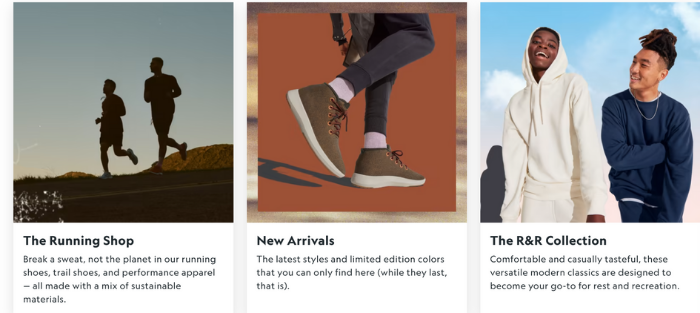


However, it’s important to ensure that any repeated keywords or themes fit naturally within the text. Copy that is too keyword-heavy can come across as fluffy and unappealing to readers.
To keep your copy effective and engaging, focus on the most important ideas for your target audience and repeat them in a natural and meaningful way.
11. Ask Readers Questions in Your Copy
Communication is a two-way street. When we converse with someone, it’s not just one person talking, but rather, a collaboration. Similarly, when you’re trying to get people to take action through your copy, you need their buy-in. One effective way to achieve this is by asking questions in your copy.
Asking questions in your copy makes the process more collaborative and encourages the reader to connect the dots. When you ask a question, it triggers the reader’s brain to actively fill in the blanks. We’re hardwired to find answers to questions, and this naturally causes us to engage with the copy we’re reading.
The best copywriters often use questions to engage their audience. By posing a question, they make the reader stop and think. This is an excellent way to grab attention, especially in a world where people are bombarded with information and have short attention spans.
In addition to grabbing attention, asking questions in your copy can also be an effective way to highlight a particular point. By framing a statement as a question, you can draw attention to it and make it more memorable. This technique is especially useful when you want to emphasize the benefits of your product or service.

For instance, consider the following example: “Looking for a new hairstyle? Why not try an air style?” The copy naturally makes your brain want to answer the question, while also highlighting the unique feature of the product.
The first goal of amazing copy is to engage people because, without engagement, you can’t encourage action. Breaking up your copy with a question is an ideal way to achieve this. However, be sure to use questions that fit naturally into the text and are relevant to your target audience.
12. Use Compelling Words in Your Copy
In any language, certain words trigger a psychological or emotional response. These are commonly referred to as power words, and you can see them being used in copywriting everywhere.
Although we’re often unaware of it, these powerful words help to persuade us into taking action, which is exactly what copywriters want. For example, common phrases in ads like:
- Get rich quick
- While supplies last
- Last chance
- Buy now, pay zero
The next time you’re split-testing your copy, try adding some of these power words and see what happens. Research has shown that adding just a couple of these words to a pop-up can increase sign-ups by more than 400%. It’s almost like a Jedi mind trick, but anyone can do it.

Take a look at the example below, and you can see some of these powerful words in action:
- Convert
- Monetize
- Instantly
- Grow
- Powerful
- Optimization
Despite being a short piece of copy, these words pack a real punch.
By incorporating powerful words into your copy, you can elicit a psychological or emotional response from your readers, making them more likely to take action. So, take some time to research power words that are relevant to your niche and experiment with how you can use them to make your copy more compelling.
FAQs
What is the Difference Between Copywriting and Content Marketing?
Copywriting and content marketing both involve creating written content to inform and persuade people to take action. However, copywriting specifically refers to written text that’s used for marketing purposes. This can include ads, emails, social media posts, and website copy. Content marketing, on the other hand, refers to the larger strategy of creating and sharing valuable content to attract and retain a clearly defined audience.
What Does a Copywriter Do?
Copywriters are responsible for crafting compelling ad copy, web copy, and other marketing materials. This includes writing catchy slogans, attention-grabbing headlines, and persuasive sales copy that encourages people to take action. They also research to understand their target audience and ensure that their writing resonates with them.
How Do You Become a Copywriter?
While there are no specific qualifications required to become a copywriter, strong writing skills and an ability to understand and connect with your target audience are essential. Many copywriters have a background in writing, journalism, marketing, or advertising. You can also develop your skills through training programs, online courses, and workshops.
What Skills Do Copywriters Need?
Copywriters need a variety of skills to be successful. Key skills include high-level writing ability, research skills, analytical skills, good communication skills, and problem-solving skills. Additionally, they must be able to think creatively and strategically, understand common advertising and marketing concepts, and create effective calls to action.
How Do You Measure the Success of Your Copywriting?
The success of copywriting is measured by how many people take the desired action, whether that’s clicking a link, signing up for a newsletter, or making a purchase. The key is to have a clear goal and an understanding of how you will measure performance against that goal. This can involve tracking metrics such as conversion rates, click-through rates, and engagement rates.
How Much Do Copywriters Make?
According to Glassdoor, the average total pay for a senior copywriter is $92,105. However, salaries can vary depending on experience, location, and industry. The Bureau of Labor Statistics estimates that the median annual wage for all writers (including copywriters) is $69,510.
What Skills Do You Need to be a Copywriter?
To be a successful copywriter, you need to understand the wants and needs of your target audience and be able to craft messages that resonate with them. You also need to be able to create effective calls to action and understand common advertising and marketing concepts. Strong writing skills, creativity, and the ability to think strategically are also important for success in this field.
Engage with Copywriting
Copywriting plays a vital role in the world of digital marketing. It’s the bridge that connects your audience with your product or service, and without it, your marketing campaigns won’t achieve the desired results. Effective copy convinces people to take action, and that’s precisely what businesses want.
However, if you need expert help with your digital marketing and copywriting strategy, don’t hesitate to contact The Brand Shop, a brand agency that specializes in creating compelling copy and helping businesses grow their online presence. Our team of experienced professionals can provide tailored solutions to help you achieve your goals.





